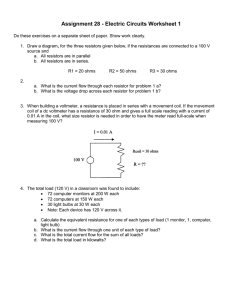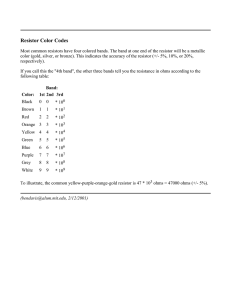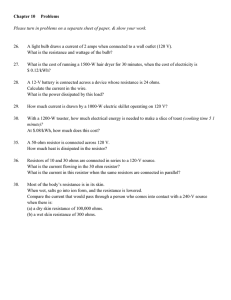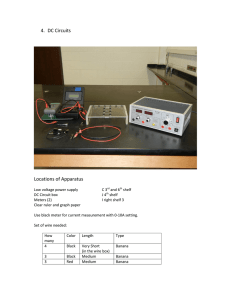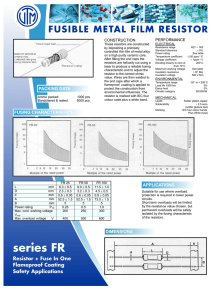Screen resistor sizing?
advertisement
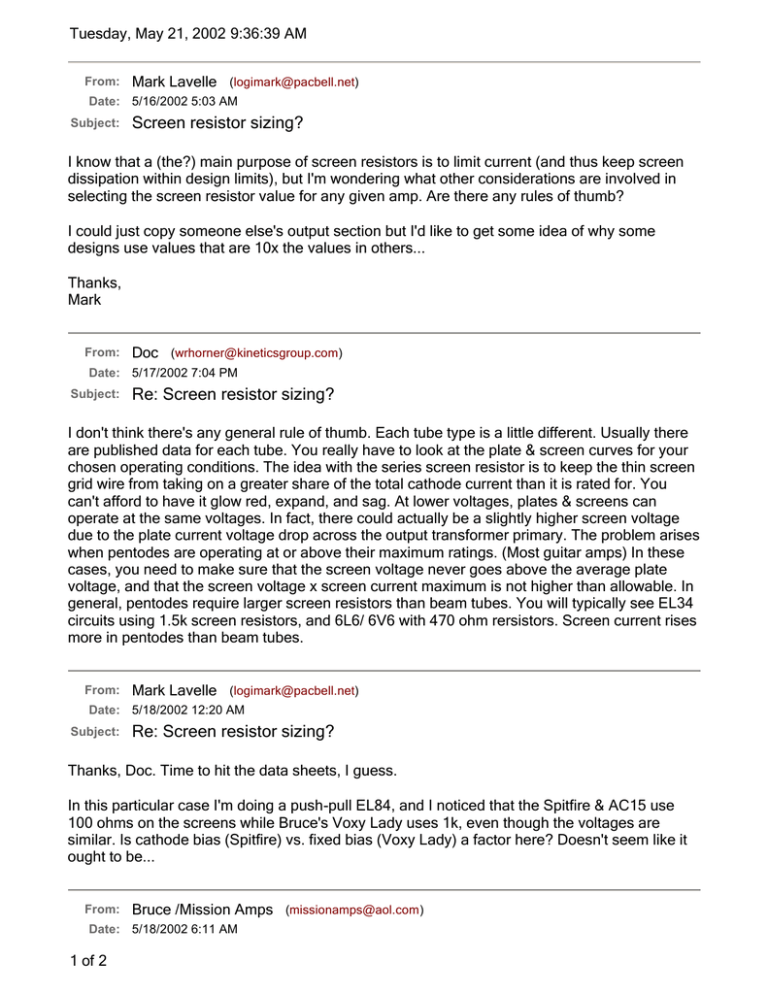
Tuesday, May 21, 2002 9:36:39 AM From: Mark Lavelle (logimark@pacbell.net) Date: 5/16/2002 5:03 AM Subject: Screen resistor sizing? I know that a (the?) main purpose of screen resistors is to limit current (and thus keep screen dissipation within design limits), but I'm wondering what other considerations are involved in selecting the screen resistor value for any given amp. Are there any rules of thumb? I could just copy someone else's output section but I'd like to get some idea of why some designs use values that are 10x the values in others... Thanks, Mark From: Doc (wrhorner@kineticsgroup.com) Date: 5/17/2002 7:04 PM Subject: Re: Screen resistor sizing? I don't think there's any general rule of thumb. Each tube type is a little different. Usually there are published data for each tube. You really have to look at the plate & screen curves for your chosen operating conditions. The idea with the series screen resistor is to keep the thin screen grid wire from taking on a greater share of the total cathode current than it is rated for. You can't afford to have it glow red, expand, and sag. At lower voltages, plates & screens can operate at the same voltages. In fact, there could actually be a slightly higher screen voltage due to the plate current voltage drop across the output transformer primary. The problem arises when pentodes are operating at or above their maximum ratings. (Most guitar amps) In these cases, you need to make sure that the screen voltage never goes above the average plate voltage, and that the screen voltage x screen current maximum is not higher than allowable. In general, pentodes require larger screen resistors than beam tubes. You will typically see EL34 circuits using 1.5k screen resistors, and 6L6/ 6V6 with 470 ohm rersistors. Screen current rises more in pentodes than beam tubes. From: Mark Lavelle (logimark@pacbell.net) Date: 5/18/2002 12:20 AM Subject: Re: Screen resistor sizing? Thanks, Doc. Time to hit the data sheets, I guess. In this particular case I'm doing a push-pull EL84, and I noticed that the Spitfire & AC15 use 100 ohms on the screens while Bruce's Voxy Lady uses 1k, even though the voltages are similar. Is cathode bias (Spitfire) vs. fixed bias (Voxy Lady) a factor here? Doesn't seem like it ought to be... From: Bruce /Mission Amps (missionamps@aol.com) Date: 5/18/2002 6:11 AM 1 of 2 Tuesday, May 21, 2002 9:36:39 AM Subject: Re: Screen resistor sizing? Actually, even with the 8K output tranny I ended up using 2 watt 2700 ohm metal oxide resistors... to keep the screens from turning the tubes into small light bulbs! Yup, fixed bias with plenty of juice and close to 370vdc B+!! I'm idling those tubes at about 9-10watts each. Bruce From: DanF (dformosa@optonline.net) Date: 5/18/2002 4:25 PM Subject: Re: Screen resistor sizing? Hi Mark I experimented with screen resistors on a 6V6 amp, at one point using a 5W potentiometer to dial-in various screen resistances. Screen resistance made a big difference. I found that anything higher than 470 ohms wasn't sounding good at all, and the closer I got to zero ohms the better. There was more compression at higher resistor values, but it was harsher sounding - I preferred lower resistances, approaching and including zero. I ended up with 100 ohms smoother, more natural sounding, with nicer transitions to distortion. The general consensus on the board at the time was that as long as the screens were within dissipation, all is well. You may want to experiment with different values, see what you think. Dan 2 of 2

